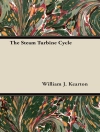This book discusses fruitful achievements in basic cognitive theories, processing technologies of visual and auditory information and research platforms. This book also can provide strong support for the research and development of artificial intelligence of major national projects, playing important roles in national application systems such as unmanned systems and smart cities. In addition, it has laid a solid foundation for the development of artificial intelligence in China. Intended for researchers who have been following the evolution of and trends in the artificial intelligence, the book is also a valuable reference resource for practitioners and scholars at various levels and in various fields.
Table of Content
Chapter 1. Cognitive Computing of Visual and Auditory Information Program: An Overview.- Chapter 2. Cognitive Computing of Visual and Auditory Information State of the Art.
About the author
Dr.Nanning Zheng was elected as an academician of the Chinese Academy of Sciences in 1999. He has been engaged in the research on the application basic theory and engineering technology of artificial intelligence and pattern recognition, computer vision and its advanced computing architecture for a long time. The established stereo correspondence calculation model of visual scene understanding and visual attention statistical learning method have become representative work in this field, providing theoretical guidance and key technologies for the construction of computer vision systems and intelligent control systems based on image information. He has won the second prize of the national science and Technology Progress Award (1991, 1996), the second prize of the National Technological Invention Award (2007), and the second prize of the National Natural Science Award (2016). He has won honorary titles such as ‘returned students who have made outstanding contributions’ (1991), ‘national young and middle-aged expert without standing contributions’ (1992), ‘national excellent teacher'(1993), ‘Chinese Young Scientist Award’ (1996). The first batch was selected into the national ‘hundred and ten thousand talents project’ (1995), won the National Outstanding Youth Fund in 1995, and won the Heliang Heli science and Technology Award in 2001.












